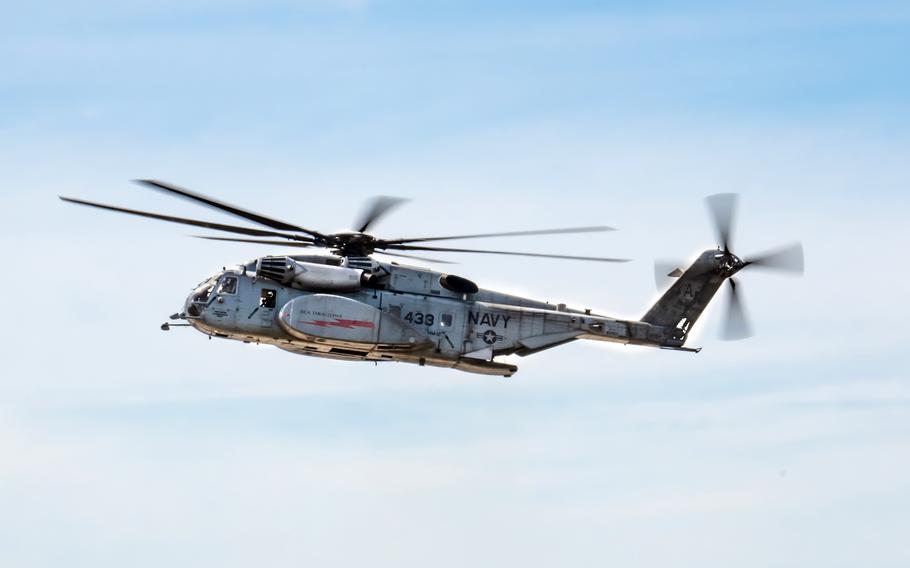
A U.S. Navy MH-53 Sea Dragon from Naval Air Station Norfolk, Va., takes part in an air show in Louisville, Ky., April 20, 2024. (Dale Greer/U.S. Air National Guard)
TOKYO — A U.S. Navy helicopter made a precautionary landing in a field near the Japanese capital over the weekend, according to American and Japanese officials.
The MH-53E Sea Dragon with Helicopter Mine Countermeasures Squadron 15 at Naval Station Norfolk, Va., landed in Ebina city shortly before 11 a.m. Saturday, Naval Air Facility Atsugi said in a statement Monday. Ebina is in Kanagawa prefecture, about 25 miles southwest of central Tokyo.
The U.S. base, also in Kanagawa, is home to Helicopter Maritime Strike Squadron 51, which provides MH-60R Seahawk detachments to warships deploying in the Western Pacific.
The Sea Dragon took off after spending just over 90 minutes in the field and landed at NAF Atsugi, the statement said.
“The cause of the precautionary landing is currently under investigation, and we regret any disturbances the landing may have caused,” the statement said.
The helicopter, which was carrying 12 people at the time of the incident, is deployed to Pohang Naval Base, South Korea, NAF Atsugi spokesman Greg Mitchell told Stars and Stripes in an email Monday.
However, it has been under the tactical control of Mine Countermeasures Squadron 7 at Sasebo Naval Base in western Japan, he said.
The helicopter was at NAF Atsugi to support a mine warfare exercise off the coast of northern Japan, which concluded July 26, Mitchell said.
There were no reports of injuries in Saturday’s incident, a Kanagawa Prefectural Police spokesman said by phone Monday. Some Japanese government officials may speak to the press only on condition of anonymity.
Ebina Mayor Masaru Uchino complained about the incident in a post on the city’s website Saturday.
“It is truly regrettable that a US military helicopter made an emergency landing in our city, as there is a school close to the site and this could have led to a major disaster involving local residents,” he wrote. “This came as a great shock to those who are forced to live next to the base and the anxiety and fear of local residents is immeasurable.”
Uchino urged Japan’s government and the U.S. military to take thorough safety measures such as implementing proper maintenance inspections and providing swift and appropriate information.
The landing happened about a week after two U.S. Army CH-47 Chinooks, participating in the annual Orient Shield exercise, made a precautionary landing farther west in Wakayama prefecture on July 28.
The two helicopters, and possibly a third, touched down along the Kino River after a warning light illuminated in one of the helicopters. They resumed their flight after about two hours, Japan’s Kinkichuo Defense Bureau said at the time.